Being a lover of hot pot, and discovering that Chongqing lays claim to having invented the dish, I had to try the local speciality whilst in town.
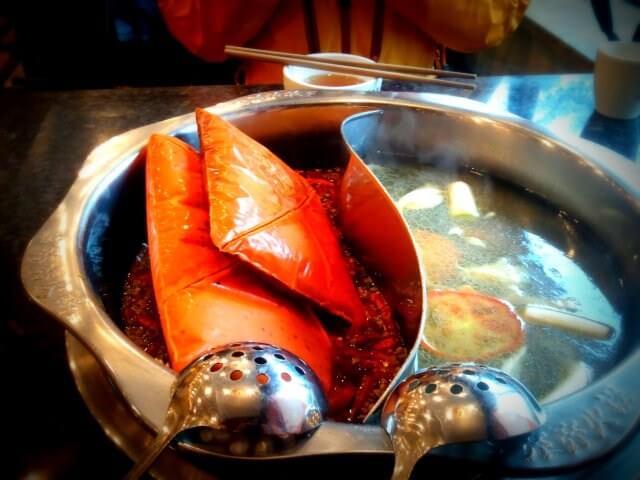
Chongqing Hot Pot
QiQi Catering, despite the industrial sounding name, is one of the highest rated restaurants on Dian Ping (and has one of the least comprehensible websites advertising their ‘chafing dishes’). We wandered in about 1.30 and the place was still packed but they squeezed us in at a seat near a rather draughty window
Whereas Chengdu hot pot (huǒguō, lit.: fire pot) is spicy and fragrant, the Chongqing cuisine is spicy and numbing. The numbing sensation is caused by Sichuan Peppers, described here. The spicy yet numbing feeling is rather like the sensation of an acidic carbonated drink.
Chongqing is also famous for having the hottest of hot pots, and the people there pride themselves on their ability to eat spicy food and claim it keeps away the cold and chills. I like spicy, but I also like my taste buds, so stuck to mild. Mild in Chongqing seems a misnomer, as only one and a half big bags of chilli went into the soup.
There are three options for the hotpot soup. First is the red soup (hong tang), which is the chilli flavoured soup. Alternatively there’s the bone soup, which is a mild yet flavoursome white broth. Some restaurants will also serve a bowl of the bone soup as an appetiser. Most people order a pot with a divider that contains both the spicy on one side and the mild on the other. Chongqing is the first place I’ve been where the split is 80-20 towards the spicy side.
Two main differences with my favourite hot pot chain that we visit in Beijing, Haidilao: the mild side was fishy rather than chicken flavoured and instead of a pack of spicy oil, two large orange slabs of spice were added to the broth.
Assuming they were frozen slabs of chili broth, I gave them a poke as they sank into the bubbling stock. Surprisingly they were room temperature and slightly tacky, which is when I realised they were slabs of solidified animal fat, full of chillies and numbing peppers.
These slowly melted into a thick, greasy broth.
After throwing in a few strips of tofu and tasting the sauce, the greasy nature is forgotten and it’s difficult to stop eating, literally – the numbing only lasts whilst you’re eating, the chilli burn sustains. Stop eating and suddenly the full force of a bag and a half of chillies washes over your tongue.
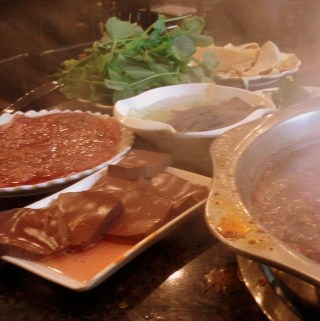
A slighty steamy picture of duck blood tofu. You can also see the bloody beef, the tripe, tofu skin and some green stuff
The duck blood isn’t like a Black Pudding blood sausage; it’s blood that has been congealed and steamed, forming blood tofu.
With the meal finished we turned off the burners and watched the spicy broth start to congeal and felt slightly guilty about what we’d just eaten.
Drips from the chopsticks fell on the cold stone table and congealed back into the original fatty orange blobs. A skin formed on the top and I guess a similar layer was forming in my arteries. If the pollution doesn’t get me, the grease will.
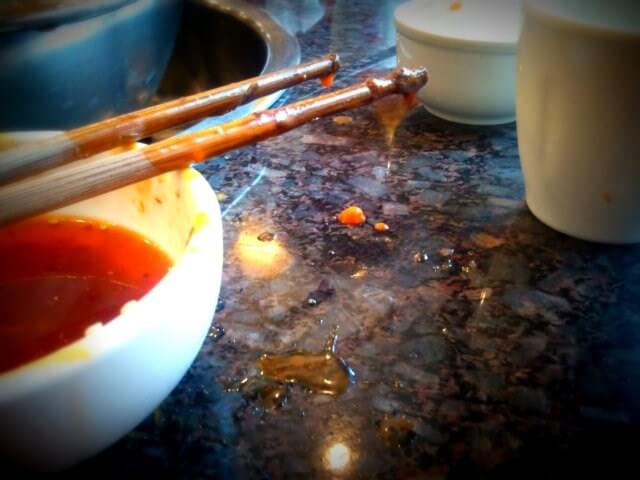
Note the orange blobs of broth, congealing on the cold stone table
Overall, it was good to try the original hot pot, but we had better versions later in Chengdu, and I still love Haidilao for the entire experience. It’s one of the only restaurants I know that can make customers wait two hours and yet be happy about it. The huge waiting area is as large as the restaurant itself, and has a number of staff who bring round food and drinks. There are also stations where it’s possible to get a shoe shine, manicure or massage.
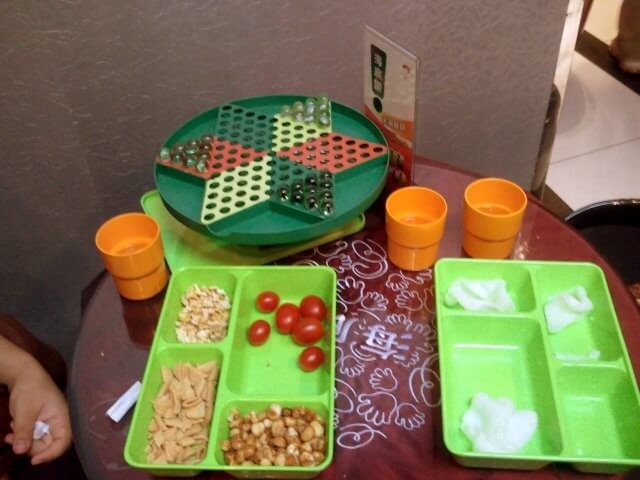
Whilst waiting at Haidilao they feed you tasty snacks and drinks. Note the Chinese chequers, or Chequers as it's presumably called here.

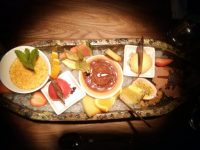
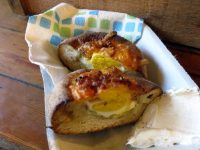







I am not sure I am ready for this gastronomic experience…
🙂
Pingback: Transit walking tour of Chongqing
That looks and sounds like a seriously intense dining experience. After a few years of regularly eating Thai, Vietnamese and other Asian cuisines, I came to realize I am a bit of a spice wimp (and also that “Mild” does not apparently mean the same thing in other cultures). I’ll east just about anything, but if it’s too spicy it makes me belly feel like it’s on fire…
I’ve developed a decent resistance to spicy food whilst in China, but it still burns my mouth and deadens my taste buds.
I’m now jealous of Chinese friends who seem to have the ability to switch between spicy and light foods during a meal and miss none of the delicate flavours.
I have so many happy memories of eating at the Qi Qi hot pot restaurant. Wonderful.
Pingback: @Selly06
Pingback: What to Do in Beijing - Travel Tips for Beijing, China